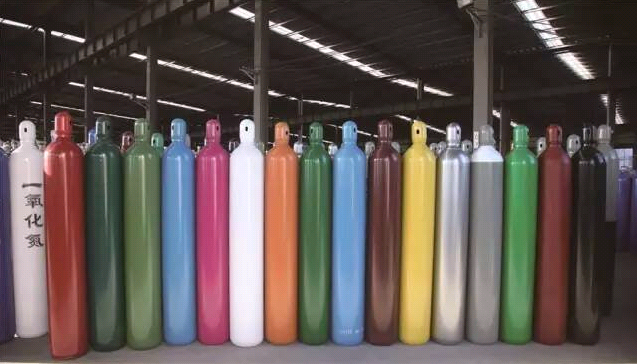Most bottled gases are stored and transported by compression in steel, aluminum or aluminum fiber reinforced gas cylinders. The pressure depends on the type of gas, which can be as high as 20 MPa, or as low as several MPa or less.

The pressure of the cylinder comes from:
1、 In order to reduce the volume of gas and facilitate storage and transportation, the pressure of some gases must be increased through the gas compressor or high-pressure vaporizer. For example, hydrogen, oxygen, nitrogen, argon, neon, helium, krypton, methane and other permanent gases whose critical temperatures are lower than - 10 ° C are compressed in gas cylinders for storage and transportation by increasing the pressure and reducing the volume.
2、 For xenon, ethylene, ethane, carbon dioxide, nitrous oxide, sulfur hexafluoride, hydrogen chloride and other gases with a critical temperature of - 10~70 ° C, it is generally necessary to pressurize them to liquefy and charge them into the cylinder. When the ambient temperature is high, the gas liquid phase transition occurs and the compressed gas with high pressure appears.
3、 Ammonia, chlorine, hydrogen fluoride, hydrogen bromide, hydrogen sulfide, dichlorodifluoromethane, liquefied petroleum gas and other gases whose critical temperature is higher than 70 ° C will not generate gas liquid phase transition in the bottle, but their saturated vapor pressure will increase with the increase of ambient temperature. For example, the saturated evaporation pressure of liquid ammonia at 0 ° C is only 0.43MPa, but when the temperature rises to 50 ° C, its saturated evaporation pressure rises to 2.03MPa.
4、 Bottled acetylene gas is not compressed or liquefied in the bottle, but in order to reduce its volume and facilitate transportation, like permanent gas and liquefied gas, it must be pressurized to dissolve in acetone solvent in the cylinder.
Gas cylinders are designed and manufactured according to the nature and requirements of gas. As long as special cylinders are used for special purposes, daily maintenance, pre filling inspection and regular inspection are carried out, serious accidents will not occur. The most important thing is that the equipment and pipelines of the gas manufacturer or gas filling station must be properly designed, installed and tested according to the gas properties and maximum pressure, and regularly inspected and tested. The testing instruments and weighing instruments used must meet the technical requirements.